

About the Spirit of the African Wilderness
(2019, 674 pages, numerous colour photographs
published in German in 2014, it is also available in English now)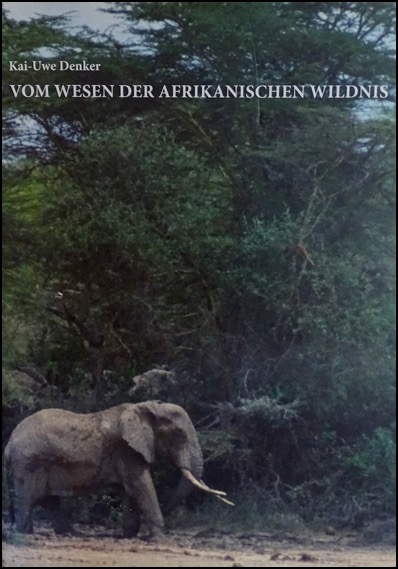
In a time where the habitat of the Elephant shrinks rapidly due to the explosion of human population in Africa and where at the same time one of the greatest threats is posed by the destruction of the environment, one of the most well-known African Professional Hunters presents a fascinating book about the Elephant as a huntable game animal. It raises the claim, that we need hunting as an important school of fundamental understanding of nature.
Only on fundamental understanding of nature can true nature conservation thrive. Which role does man play in nature? Or don’t we need nature anymore?
About the Spirit of the African Wilderness is about hunting the old Elephant bull as the greatest game animal of the African hunting grounds. It describes hunting adventures, predominantly in the northern Kalahari of Namibia, it deals with the great art of tracking, and answers questions about accessories needed and other important aspects of Elephant hunting. Last but not least it discusses the justification of Elephant hunting and hunting in general.
Along the Hunter’s Path
(2006, 506 pages, numerous colour photographs)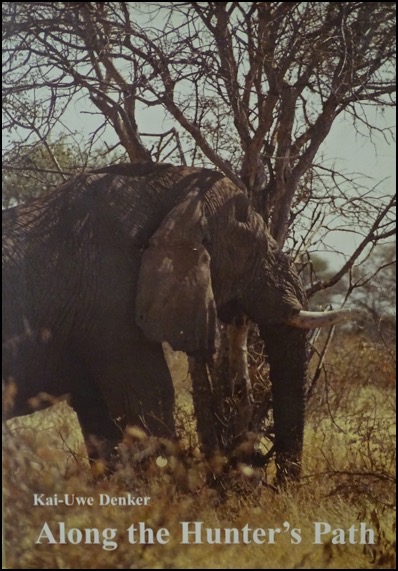
“...when I turned the last page, I was of the opinion that I had read, after Harry Manners’ “Kambaku”, probably one of the most significant Africa books of the last decades.
Along the Hunter’s Path is in my view the book on African hunting par excellence, the creed of a thoroughly passionate professional hunter...
The gripping hunting scenes, embedded in atmospheric landscape images, are often of such breathtaking reality that one repeatedly feels transposed into the role of the hunter, imagining the feel of dust, heat, sweat or the scent of the wild after rain. Please allow an old man such judgement, who himself spent uncounted hours following elephant tracks almost half a century ago and who, while reading these lines, believes he is experiencing everything once more.”
Anno Hecker, former Project Leader of the College of African Wildlife Management in Mweka/Tanzania and longtime honorary game warden of Tanganyika, Tanzania and Kenya.
Along the Hunter’s Path deals with thoughts and hunting experiences on the African continent in three separate parts. Part 1 recounts diverse hunting experiences in Namibia, Mozambique, Cameroon and Tanzania with the Big Five, as well as Greater and Lesser Kudu, Gerenuk, Bongo and other game. Part 2 deals mainly with elephant hunting in one of the most remote areas of Namibia, the East-Kavango. In the third part, thoughts about hunting in general and in our time are expressed.
“A monumental work”
Harald Wolf, Hatari Times
Aus großer Höhe
(2012, 425 pages, numerous colour photographs, available in German only)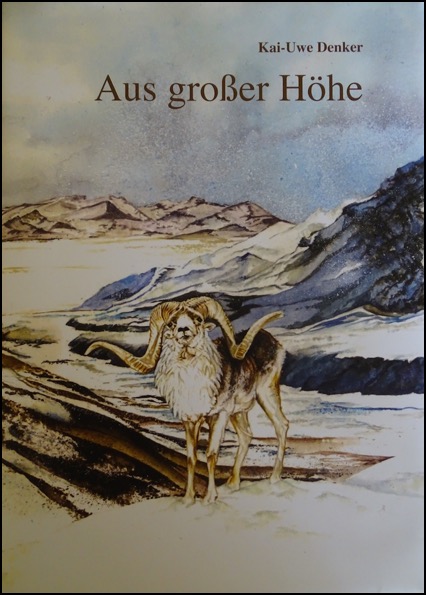
“Kai-Uwe Denker is one of the few hunters, who completely devoted himself to puristic, hard, absolute hunting. With all consequences, no compromises. In Africa or in Asian Highlands. He travels to the Asian mountain ranges several times, merely equipped with an old ’98 Mauser rifle with open sights. Thereto, where otherwise only magnum rifles and high-tech are standard, where foolish shooting distances are the order of the day. Denker is a living anachronism. A philosopher with a rifle. An uncomfortable, but not instructive thinker. And hence so important.”
Bernd Kamphuis
Hunter’s Path
Snow driven heights; huge, legendary Marco Polo argali on the rooftop of the world, Ibex in the most rugged of Asian mountains. Extremely tough - and extremely expensive - mountain hunting. The once almost inaccessible Mountain regions; the ranges, which only the toughest adventurers reached, are nowadays although not accessible to normal mass-tourism, yet more easily reachable. Many hunters from all over the world have been Marco Polo hunting successfully. Group after group, one after the other comes on these hunts in the hunting season.
Is this compatible: endless adventure, successful hunting, sustainability and extensive commerce? When completely different cultures clash in extreme situations? Are adventures plan- and sellable; can one really, booked 5 days in advance, experience and enjoy these adventures - or do they unveil a paradox, which witty agents thought up? What is still truth in one of the last adventures of hunting?
Jagen in Namibia
(1994, 125 pages, illustrations by Helge Denker, available in German only)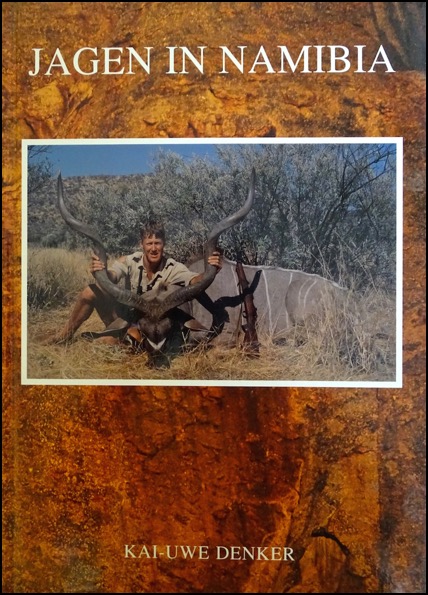
Hunting in Namibia (“Jagen in Namibia”) extensively deals with all aspects of trophy hunting in Namibia.
Descriptions of hunting areas, game species and hunting of theses game animals.
Hunting gear tips and many other information make this a very useful book for the prospective Namibia-hunter.
Furthermore this well-written book is also stimulating literature for experienced hunters.
Accurate, life-like illustrations and explanatory sketches complete the text.
Erongo Verzeichnis for African game animals
Kai-Uwe Denker is also the publisher of the Erongo Verzeichnis for African game animals, which aims at preserving pristine wilderness areas and hunting game animals in their natural habitat.
Hunting according to the Erongo Verzeichnis is based on the following principles:
Hunting…
in the natural, historical habitat of the specific species
in an area, where the game animals are able to elude the pursuits of the hunter beyond the boundaries of such an area
in an area where at least one of the five large african beasts of prey occurs (Lion, Leopard, Cheetah, African Wild Dog and Spotted Hyena) and evidently regulates the game populations in the specific area
Trophies of old animals receive a multiplier of 1.1 to their total scoring.
Too young trophies are disqualified.
For more information, please visit the website at www.erongo-verzeichnis.com.
Hunting stories and other publications
Here we would like to present a few articles that have been written by hunting guests of ours or otherwise by ourselves; mainly for NAPHA’s hunting Magazine “HUNTiNAMIBIA”. Follow the links below and enjoy!
About the Spirit of the African Wilderness
(extract published in HUNTiNAMIBIA Magazine)
Elephant Hunting – Drama and Powerful Impressions - Uli’s safari was slowly nearing its end, when we had taken up the trail of a group of six bulls at the Klein Dobe Waterhole. We came up…read more
Buffalo Hunting in the Zambezi Region 2016
Eventful days at the Linyanti – In September 2016 I guided a buffalo hunt for my friend and colleague Felix in the Bamunu Conservancy. The Bamunu Conservancy in Namibia’s Zambezi Region…read more
Excitement all the way - In August 2015 I was back in Namibia. This time I wanted to hunt for a mature old kudu bull in the Erongo Mountains. Together with…read more
The core of hunting - The old Land Rover rattles through the night over the gravel road. The red shimmer of the campfire beckons from afar. We have…read more
Nature’s ballet - I took my first klipspringer when I was nine or ten years old. Early one morning my father and I scaled the granite ridge behind our house. At the top…read more
The king of the dry bushveld and the rugged mountains - Camouflage is the essence of its nature.
In 1908 Dr Arthur Berger and his long-standing friends, Captain Roth and Baron von Donner, undertook an extensive hunting and research expedition…read more
Nature’s ultimate hunter - Herbivores as well as carnivores are descended from insect eating ancestors which evolved some 65 million years ago, soon after dinosaurs became extinct…read more
To look a wild lion in the face - During the recent CITES Conference of Parties in Johannesburg it so happened that I was seated in the row behind the delegation of the Humane Society, all of who, like many other representatives, had placed a soft toy lion
…read more
Kudu Population Dynamics Study
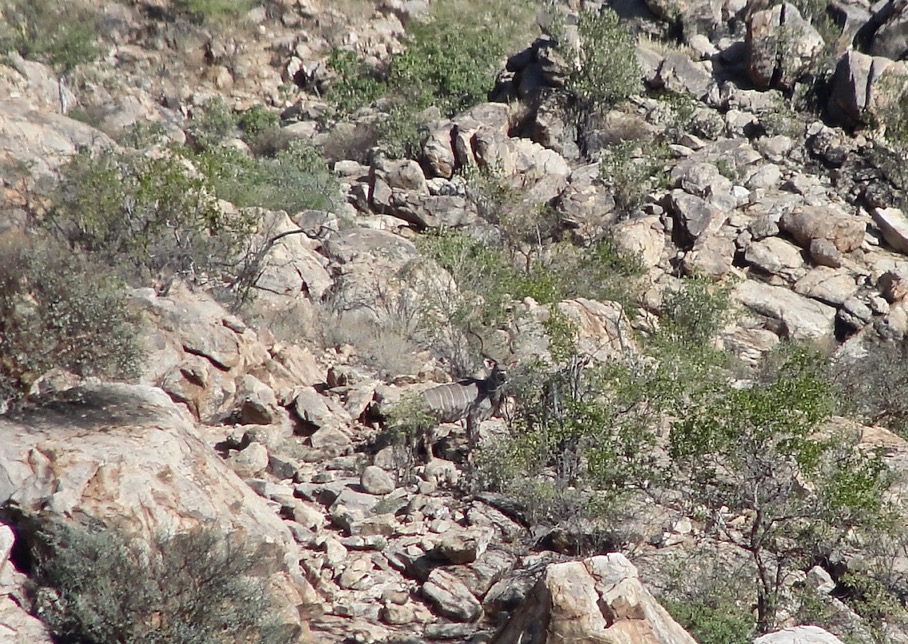
It is widely accepted that Kudu get diseases like the rabies epidemic due to an overpopulation, where nature subsequently tries to regulate numbers by means of diseases. We did an unofficial study on population dynamics of Kudu in the south-western Erongo Mountains.
Read more about this study here
